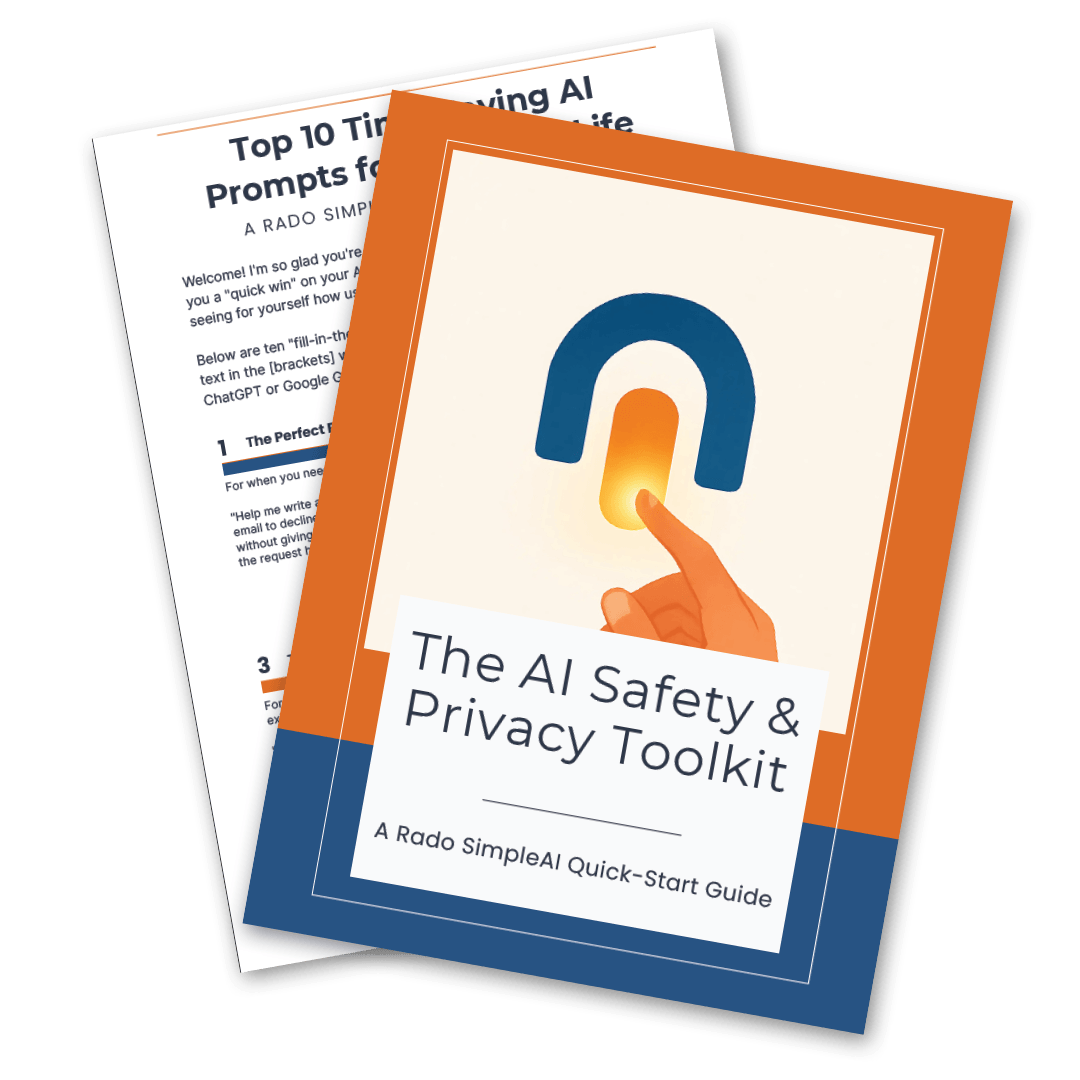AI for Beginners: The Complete Guide to Understanding and Using AI
Why does AI feel so confusing?
You sit down with your morning coffee and open your phone. Photos are neatly grouped by faces. Your email knows what’s junk and what matters. Your maps app warns about traffic before you pull out of the driveway. It feels helpful and a little mysterious. How does your phone “know” all this?
If AI sounds distant or complicated, you’re not alone. Many smart, capable adults feel the same. Here’s the good news: you don’t need to be “tech‑savvy” to benefit. You just need a plain explanation and a few safe first steps. That’s what this guide is for.
So, what problem will this blog solve for you? We’ll turn vague terms into everyday language, show where AI already fits your life, and outline simple ways to try it without risking your privacy or your peace of mind. You might be wondering: Will this take hours to learn? Do I need special skills? Not at all. We’ll keep it practical and short.
By the end, you’ll know what AI is, what it is not, and how to use it to save time. Think of AI like a helpful neighbor who knows shortcuts. You still choose the route. The tools simply make the trip smoother.
The takeaway: You don’t have to master the tech. You only need a clear map and a few trusted tools. We’ll provide both.
What exactly is AI in plain language?
Imagine you’re sorting a big box of family photos. After a few minutes you notice patterns: this stack is Aunt Jana, this one is the lake house, this one is the kids at Christmas. Now picture a computer doing similar pattern‑spotting with far more speed. That, in simple terms, is AI.
A simple definition. Artificial intelligence is the umbrella term for computer systems that learn from examples, spot patterns, and make predictions to help with tasks like sorting, recommending, and forecasting (Google Cloud, 2025). In everyday apps, AI is not “thinking” like a person. It’s applying math to data to guess what’s useful next (IBM, 2025).
Three levels you’ll hear about
Narrow AI (what we use today): excellent at one job—like unlocking your phone with your face, filtering spam, or suggesting a movie.
General AI (still theoretical): a system that could do any intellectual task a human can (Wikipedia, 2025).
Superintelligent AI (also theoretical): would surpass human ability in most areas. It belongs in long‑term research and sci‑fi, not your to‑do list today.
The Russian dolls image
Think of AI → Machine Learning (ML) → Deep Learning (DL) like nested dolls (IBM, 2025). AI is the big doll. Inside is ML, where systems improve at a task by studying examples. Inside that is DL, which uses many‑layered “neural networks” to handle complex data like photos, video, and speech.
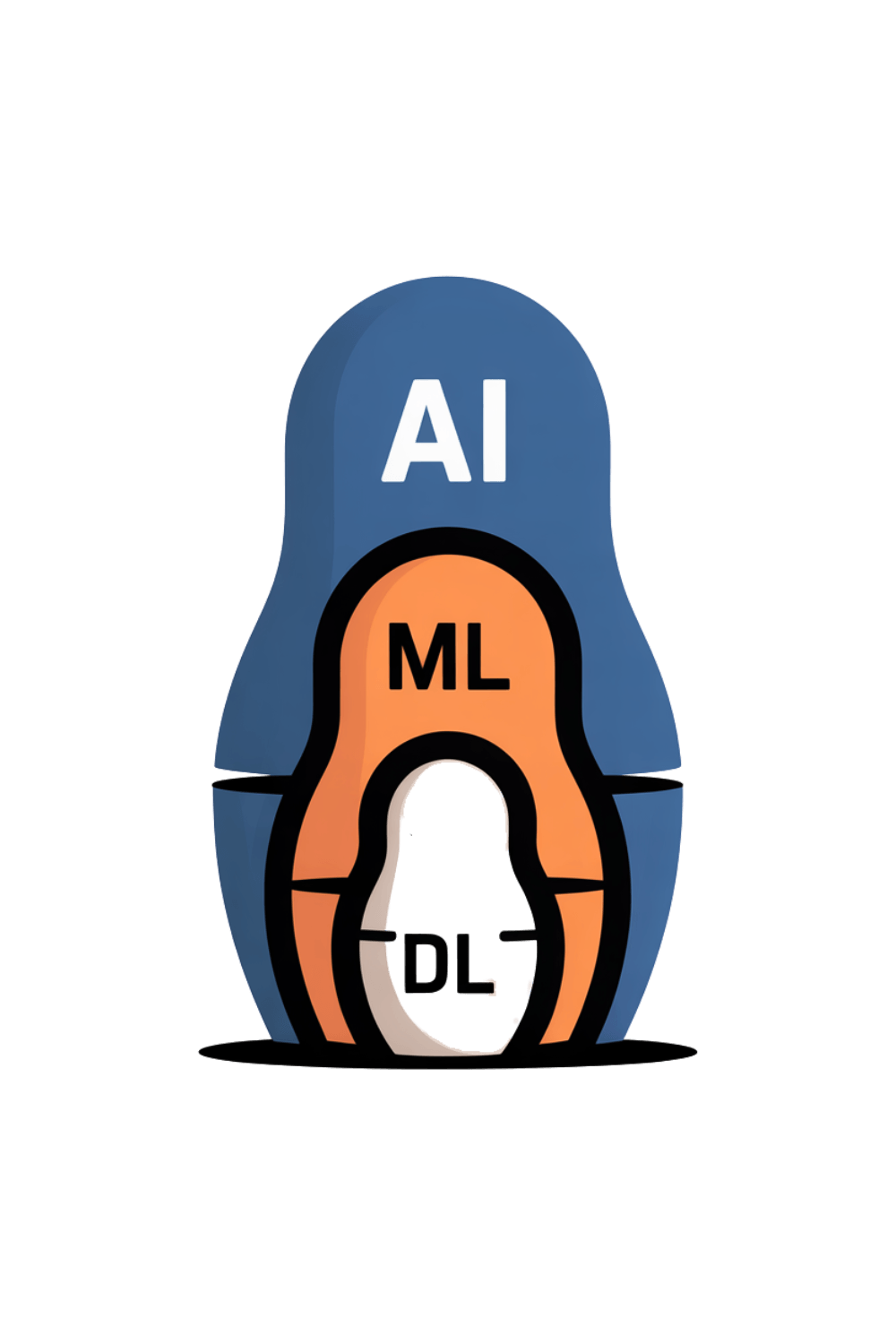
Machine Learning in plain English
Instead of programmers writing rules for every situation, ML learns patterns from data. That’s how Netflix suggests shows you’ll like and how email filters spam (Tableau, 2025; Coursera, 2025). Your bank’s fraud system notices when a purchase doesn’t fit your usual pattern and flags it for review. Helpful, right?
Deep Learning, the reason your phone feels “smart.”
Deep Learning stacks many tiny decision steps into layers, a bit like a kitchen with stations: one station looks for edges in a photo, the next for shapes, the next for faces. Together they recognize “this is your daughter.” A friendly analogy: think of a pizza assembly line—dough, sauce, cheese, toppings—each station refines the result (Karva, 2025).
So what does this mean for you?
It means AI excels at pattern‑heavy tasks where there’s lots of data. Unlocking your phone. Grouping photos. Routing around traffic. Summarizing a long email. None of that requires sci‑fi intelligence. It’s math plus examples.
You might be wondering: Does AI “understand” like a person? No. It predicts. Does it make mistakes? Yes, sometimes, which is why a little human judgment goes a long way. Do you need to know the math? Not at all. You only need to know what the tool is good at—and where you should still be in charge.
The takeaway: Today’s AI is a strong pattern‑spotter, not a mind. Use it for repetitive, data‑heavy tasks. Keep your judgment for anything sensitive or high‑stakes.
How are adults 45+ already using AI without realizing it?
Think about your last trip to the bank, streaming a favorite show, or asking your phone for directions. Chances are, AI was working quietly in the background, even if you didn’t call it that. In fact, a University of Michigan poll found that 55% of adults 50 and older have already spoken to or typed into an AI tool—things like voice assistants, chatbots, or smart devices (University of Michigan, 2025). Surprising, right? Many people assume AI is only for tech enthusiasts, but in reality it’s woven into the routines of millions of adults every day.
Everyday examples you might recognize:
Smartphone helpers. Face unlock, predictive text, and voice-to-text aren’t just neat tricks; they’re AI models learning from thousands of examples to make your phone more convenient.
Email filters. When Gmail or Outlook keeps spam out of your inbox, that’s AI pattern-spotting at work.
Streaming services. Netflix, YouTube, and Spotify learn your viewing or listening habits to recommend your next show or playlist (AARP, 2024).
Shopping and banking apps. Personalized ads, fraud alerts, and even reminders about unusual charges rely on AI to protect your money and simplify your choices.
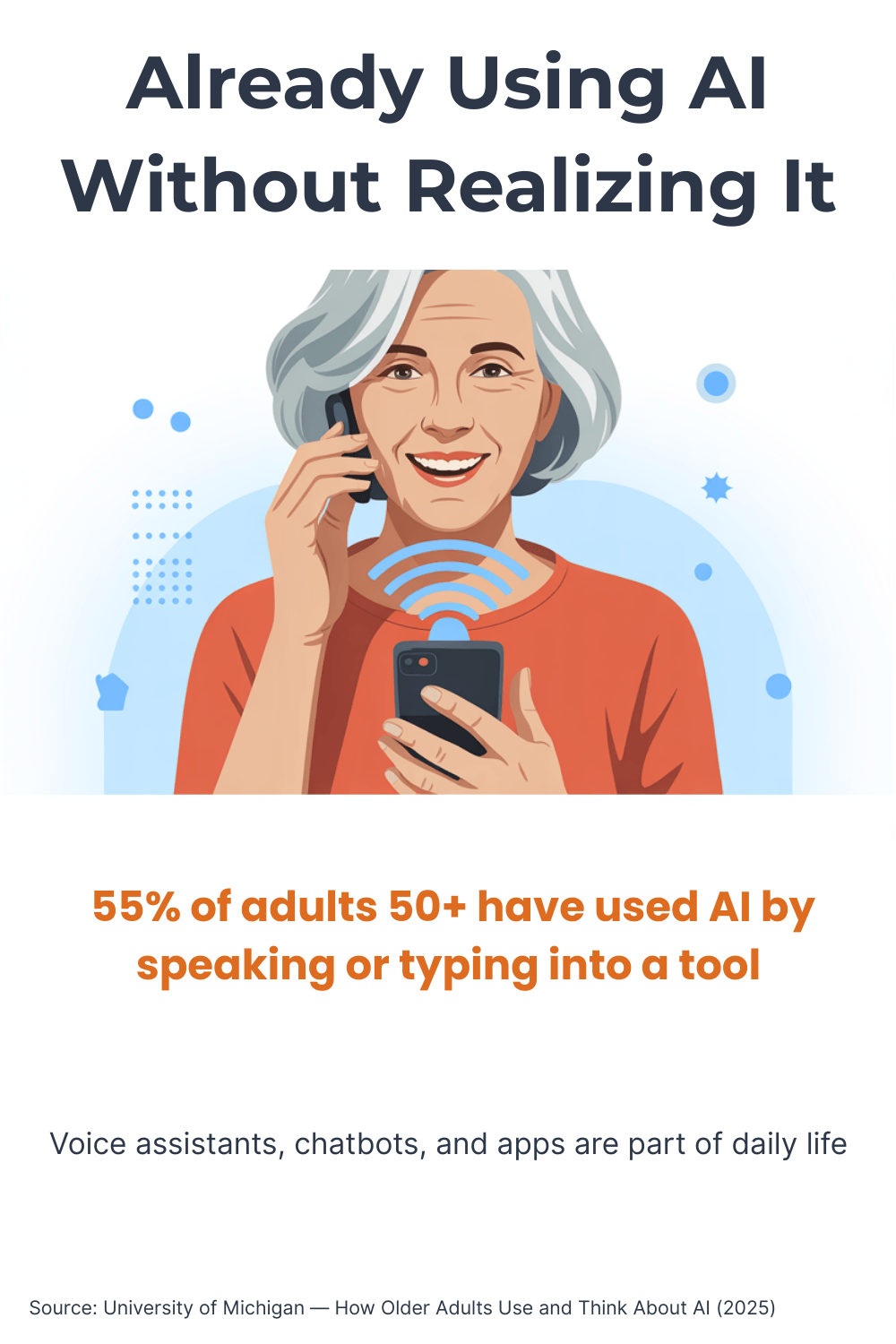
So why do so many people over 45 still feel uncertain about AI? Part of it is visibility. These tools don’t announce themselves as “AI-powered”—they just show up as handy features. Another reason is trust. According to AARP, nearly two-thirds of adults 50+ purchased new tech in 2024, but a large portion still worry about privacy and misuse (AARP, 2024).
You might be wondering: if I’m already using AI, why does it matter to name it? The answer is confidence. When you realize you’ve been handling AI without trouble for years, it builds the courage to try it in new areas—like summarizing notes, budgeting, or health tracking. Recognizing your existing use is the first step to shifting from passive consumer to confident user.
The takeaway: If you’ve ever used a voice assistant, relied on email spam filters, or enjoyed smart recommendations, you’ve already used AI. Naming it helps build trust and shows you’re more prepared than you think.
What can AI actually do for you today?
Picture this: you’re settling into bed on a chilly evening, and the thermostat has already warmed the room. Or you’re about to pay a bill and your banking app sends a gentle reminder so you don’t forget. These small moments of support often come from AI quietly doing its job. Far from being futuristic, AI is already a personal assistant in your pocket, home, and daily routines.
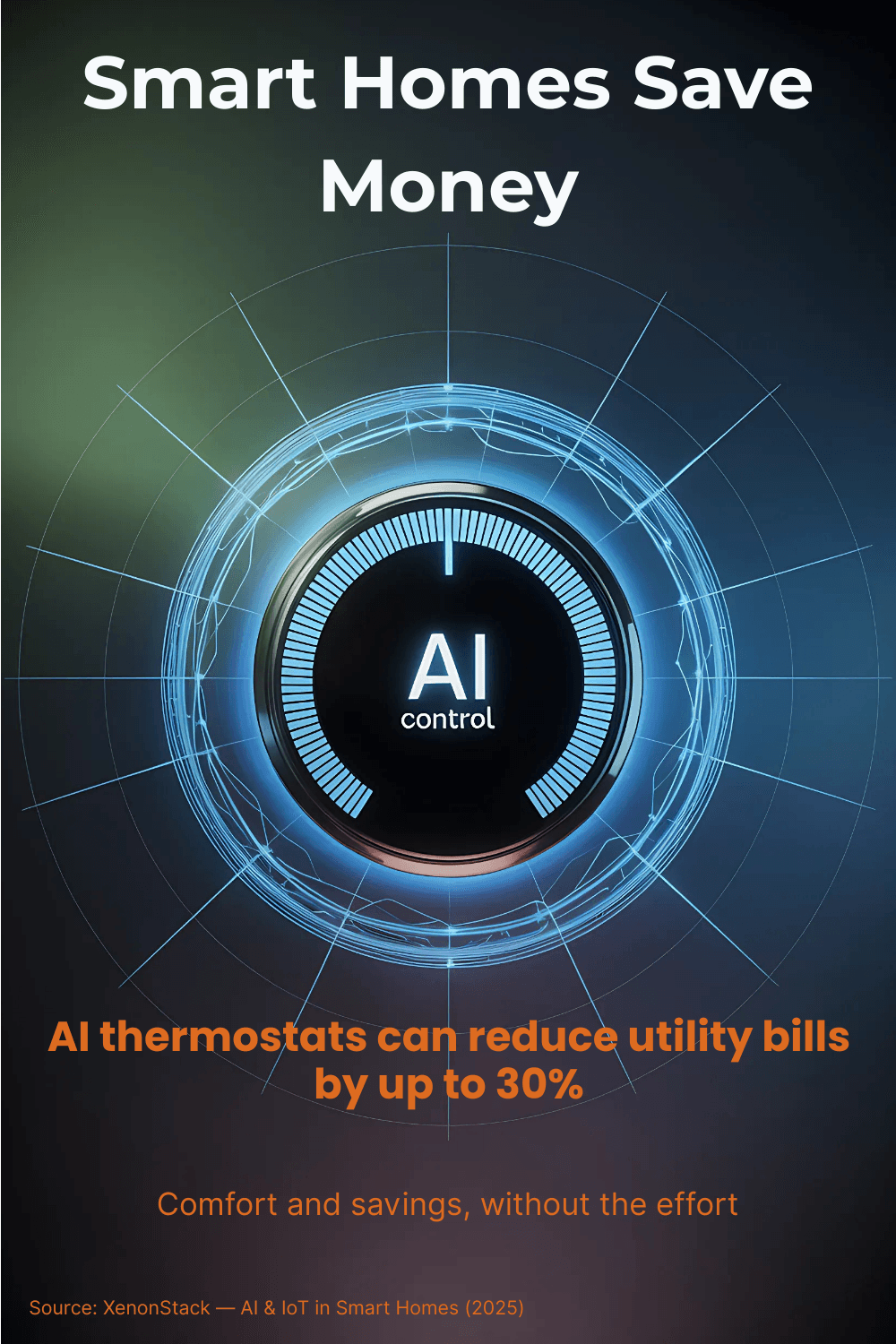
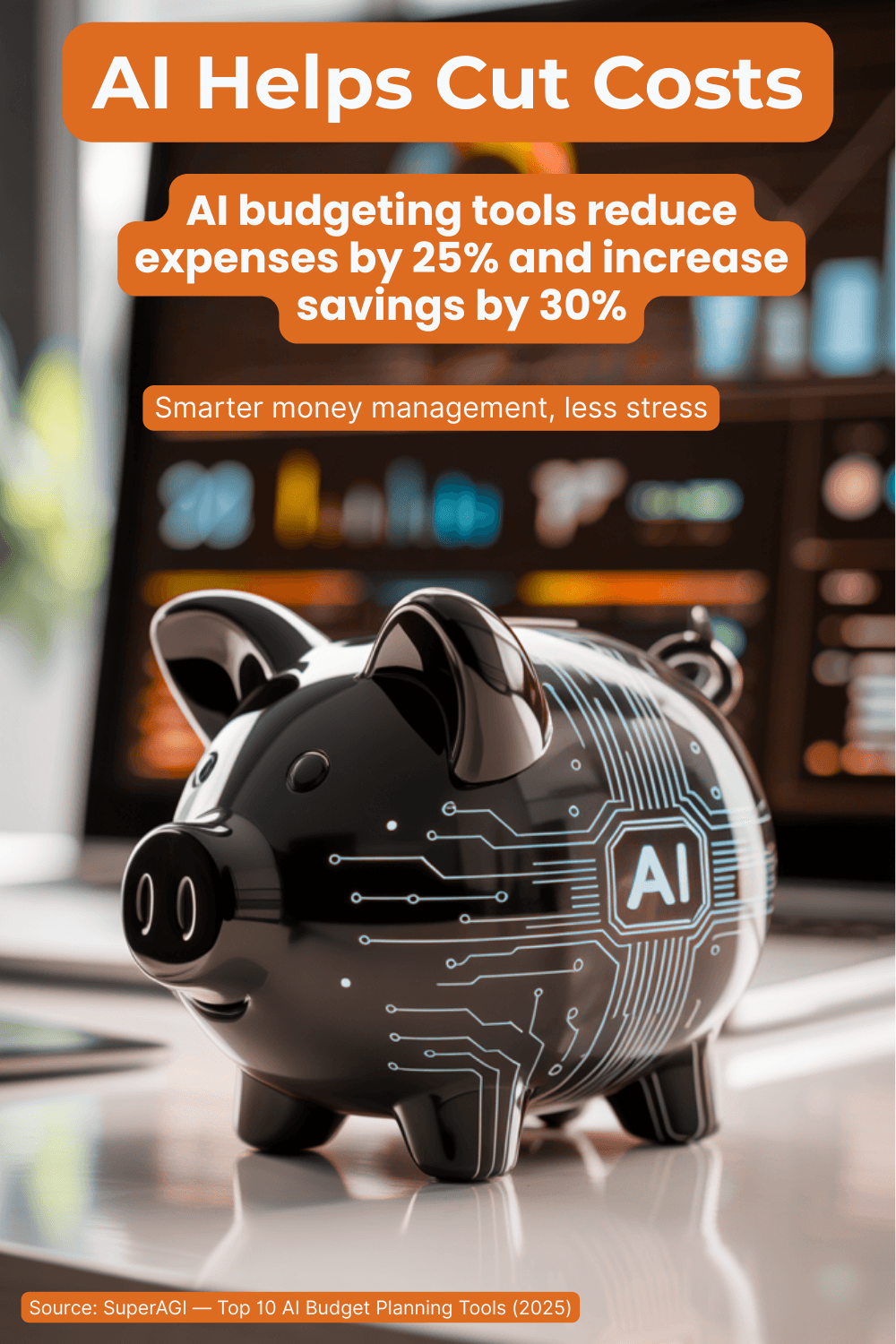
At home. Smart thermostats like Nest or Ecobee learn your schedule—when you leave for work, when you return—and adjust the temperature automatically. Research shows these systems can save families up to 30% on energy bills (XenonStack, 2025). Video doorbells, such as Ring, use AI vision to distinguish between a delivery driver, a family member, or a stranger, offering peace of mind without constant monitoring (Inoxoft, 2025).
For your finances. Managing money can feel overwhelming, but AI budgeting apps like Cleo and Monarch Money categorize expenses automatically. They can spot forgotten subscriptions and even warn you when you’re on track to overspend (SuperAGI, 2025). Studies show users who rely on AI tools often cut unnecessary expenses by 25% and increase savings by 30%. That’s not theory—it’s money back in your pocket.
For health and independence. Wearable devices like Apple Watch or Fitbit now go beyond step-counting. They monitor heart rate, sleep, and even detect irregular patterns that could signal health concerns. AI-powered fall detection systems can send alerts to caregivers immediately, offering safety for older adults who want to live independently (Simbo AI, 2025). Social robots like ElliQ provide companionship, games, and reminders, which research shows can significantly reduce loneliness among older adults (PMC, 2025).
You might be asking: isn’t this too much technology for everyday life? Not really. Each of these tools focuses on one clear purpose—comfort, safety, or financial peace of mind. They’re not here to replace your decisions, just to remove small hassles.
The takeaway: AI is already helping with home security, money management, and health. These tools save time, cut stress, and make life a bit smoother—without needing you to be a tech expert.
Should I worry about AI taking jobs or spreading misinformation?
It’s normal to feel a twinge of worry when headlines warn about AI replacing jobs or creating “deepfakes” that look real. The truth is more balanced: AI is changing how work and information flow, but it’s not replacing human judgment.
On jobs. The World Economic Forum estimates that while 85 million jobs may be displaced by automation by the end of 2025, 97 million new ones will be created, especially in areas that require creativity, empathy, and oversight (World Economic Forum, 2025). In other words, AI tends to take over repetitive or data-heavy tasks, leaving humans to focus on what requires insight or personal touch. A study by the St. Louis Fed found that workers using generative AI save about 2.2 hours per week, freeing time for more meaningful work (St. Louis Fed, 2025).
On misinformation. AI can produce errors (“hallucinations”) or be used in harmful ways, like deepfakes. A Pew Research survey shows 92% of adults over 50 want to know if content comes from a person or from AI (University of Michigan, 2025). That’s a fair concern. The good news: regulations are emerging that require AI-generated content to be clearly labeled (IBM, 2025). And there are simple habits you can adopt: fact-check important information, be cautious about sharing unverified content, and read privacy policies of AI apps.
You might be wondering: does this mean AI is dangerous? Not exactly. Like a sharp tool, it depends on how it’s used. In safe, everyday tasks—budgeting, reminders, summarizing—it can be a huge help. In sensitive areas—health, finances, news—you should keep your judgment front and center.
The takeaway: AI may shift certain jobs and can spread misinformation, but with awareness and a few safety habits, you stay in control. It’s a tool, not a replacement for your judgment.
How can you start using AI with confidence?
Picture dipping your toe in the water before diving in—that’s the best way to approach AI. Confidence doesn’t come from reading a manual cover to cover. It comes from safe, small experiments that let you see the benefits firsthand.
Start with tools you already trust. If you use a banking app, check if it has built‑in budgeting or fraud alerts powered by AI. If you’re on Gmail or Outlook, notice how spam filters are already protecting your inbox. Recognizing these familiar uses helps remove the sense that AI is foreign or risky.
Pick one new task. Choose a single area of your life where AI could help—maybe summarizing meeting notes, tracking expenses, or setting up reminders. Apps like Grammarly can polish your writing, while tools like NotebookLM or ChatGPT can shorten long articles into easy summaries. Starting small reduces overwhelm and gives you quick wins (Gallup, 2025).
Check the safety basics. Before trying a new app, read its privacy policy. Does it clearly say how your data is stored? Is it GDPR‑compliant? Trustworthy tools explain this up front. If details feel hidden or vague, that’s a red flag (IBM, 2025).
Learn by doing. A McKinsey survey found that over 75% of organizations already use AI in some form (McKinsey, 2025). Confidence grows the same way for individuals: through hands‑on use. It’s normal to feel cautious at first. But each time you see AI save you a few minutes or simplify a chore, the trust builds naturally.
You might be asking: do I need to know the tech behind it? Not at all. Just like you don’t need to understand electricity to flip a light switch, you don’t need to master algorithms to benefit from AI. What matters is knowing which tools serve you best.
The takeaway: Begin with one trusted app, look for clear privacy practices, and build confidence step by step. AI becomes less intimidating the more you see it working for you.

From confusion to confidence
If AI has felt distant, complicated, or even intimidating, hopefully you can now see it in a different light. It’s not a sci‑fi concept or a skill reserved for tech experts. It’s already in your phone, your bank, your TV, and even your thermostat—quietly making life a little smoother.
Here’s the short version: AI spots patterns fast. That makes it great for repetitive, data-heavy tasks like sorting emails, recommending shows, or alerting you to unusual spending. It doesn’t replace your judgment, and it doesn’t “think” like a person. It’s simply a tool—one you can learn to use with clarity and confidence.
The real value lies in how it supports you: saving time, reducing stress, and offering peace of mind. And the more you recognize where you’re already using AI, the more confident you’ll feel about trying it in new areas.
So, your next step? Pick one safe, simple tool and see how it helps. Want a hand getting started? Download our free AI Quick-Start Bundle. It is a step‑by‑step resource designed for beginners who want to use AI wisely, without the overwhelm.
The takeaway: AI is already part of your daily life. When you approach it with curiosity and a few smart habits, it becomes less a mystery and more a trusted helper.
Q: Do I need to be tech-savvy to start using AI?
A: Not at all. Most AI tools are designed to be simple and user-friendly. If you can use email or a smartphone, you already have the skills to try AI.
Q: Is it safe to use AI apps with my personal data?
A: Reputable apps explain how they handle your data and follow privacy rules like GDPR. Always check their privacy policy. If details are unclear, it’s best to avoid that app.
Q: Are AI tools free or do I need to pay?
A: Many AI tools have free versions with basic features. Paid plans usually unlock more options, but you can start small at no cost.
Q: Can AI replace my job?
A: AI is more likely to automate repetitive tasks than to replace entire jobs. In fact, many new jobs are emerging that involve working alongside AI.
Q: What’s the easiest way to try AI for the first time?
A: Start with something practical—like asking a voice assistant a question, using Grammarly for writing, or trying a budgeting app. One small step builds confidence quickly.
Sources:
Google Cloud — What Is Artificial Intelligence? (2025). Link
IBM — What Is Artificial Intelligence? (2025). Link
Wikipedia — Artificial General Intelligence (2025). Link
IBM — AI vs. Machine Learning vs. Deep Learning vs. Neural Networks (2025). Link
Tableau — Examples of Machine Learning (2025). Link
Coursera — 7 Real-Life Examples of Machine Learning (2025). Link
Karva, K. — The Basics of Neural Networks Explained Using Pizza Analogy (2025). Link
University of Michigan — How Older Adults Use and Think About AI (2025). Link
AARP — Older Adults Embracing Technology to Enhance Their Travel Experiences (2024). Link
XenonStack — AI & IoT in Smart Homes (2025). Link
Inoxoft — How to Use AI for Smart Home Technology (2025). Link
SuperAGI — Top 10 AI Budget Planning Tools for Personal Finance (2025). Link
Simbo AI — AI for Seniors and Independent Living (2025). Link
PMC — AI Companionship for Older Adults (2025). Link
World Economic Forum — Future of Jobs Report (2025). Link
St. Louis Fed — The Impact of Generative AI on Work Productivity (2025). Link
IBM — AI Transparency (2025). Link
Gallup — AI Use at Work Has Nearly Doubled in Two Years (2025). Link
McKinsey & Company — The State of AI in 2024: Generative AI’s Breakout Year (2025).Link

